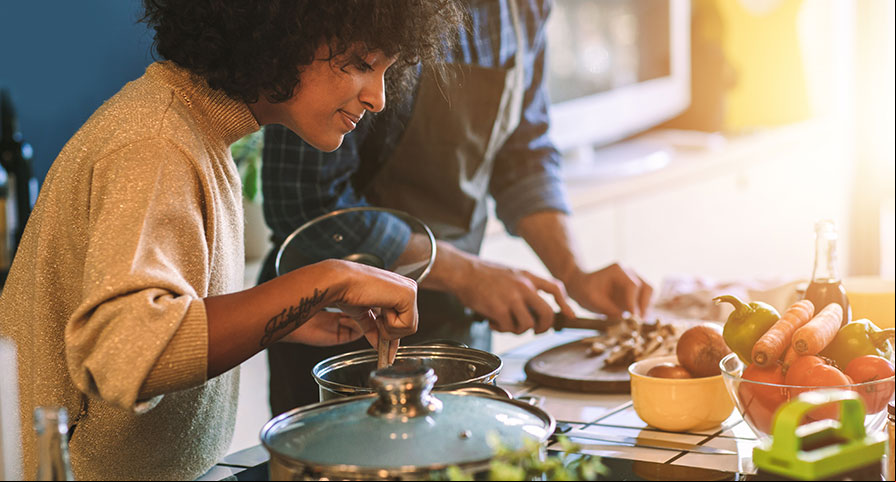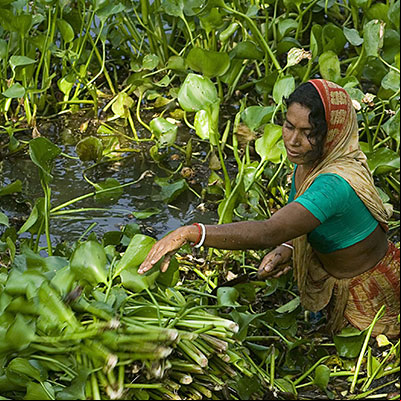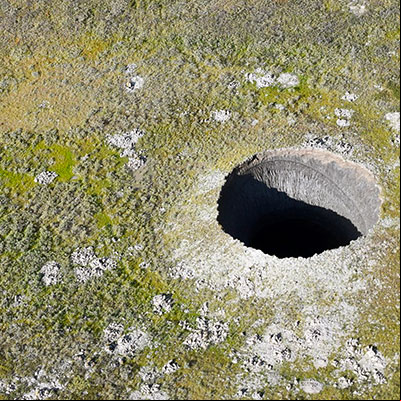Can we feed 10 billion people without destroying the environment?
I’d never spent much time thinking about chickpeas.
That is, until I met Doug Cook, director of the Chickpea Innovation Lab at the University of California, Davis. Cook and his research team spent years hiking throughout south-east Turkey in search of wild chickpea plants. Using GPS data and information from local shepherds and village chiefs, Cook’s team collected more than 2,000 individual strains.
Some have more protein than the varieties that we are used to eating. Some are better at withstanding drought. Some aren’t bothered by certain pests. And when you start cross breeding them, the variations are endless. The goal is to find the genetics underlying some of the most useful qualities of these strains. The result could be chickpeas with improved resilience to climate change and pests, with higher nutrient levels.
Since chickpeas are a primary source of protein in several countries that contain 20% of the world’s population, the implications of Cook’s discoveries for feeding our growing population could be huge.
My foray into the world of chickpeas was just one part of a much wider investigation for the new BBC World News and BBC Future series, Follow the Food. I have been travelling around the world discovering how farmers, scientists and engineers hope to improve the efficiency and sustainability of our food.

It’s something that most of us who aren’t intimately involved with food production and distribution – particularly in the developed world – don’t think much about. I live in Brooklyn, New York. Though I consider my family to be food-conscious – we try and buy locally produced food as much as possible, compost our scraps and eat the majority of our leftovers to reduce waste – the true issues encountered with feeding the world don’t affect us much day to day.
When I need to buy something to eat, I can go to any of the seven markets (and countless restaurants) within a four-block radius of my home and there’s almost nothing I can’t find. I can get watermelon and peaches in the middle of a blizzard in January.
At the rate we are going, the world may no longer have any usable topsoil within 60 years. a1i3p
Let’s step out of this bubble for a moment. The food system that makes this choice possible has become vastly unsustainable. It has led to the progressive destruction of topsoil – essential for growing crops – in many parts of the world. Some experts believe that at the rate we are going, the world will no longer have any usable topsoil within 60 years. Food production today also relies on spraying large quantities of pesticides onto crops, even though 90% of these compounds don’t stay on the plant, and can end up in soil and waterways.
The overriding statistic that inspired the whole series is that by 2050 there will be an estimated 10 billion people living on this planet. If we continue doing things the way we are now, we will not be able to feed them all.
These are petrifying statements. Despite this, there are strong reasons for hope and optimism. That’s because there are people, like Cook, who are tackling these problems. The strides they’ve made so far are awe-inspiring and they are just at the tip of the iceberg.
Interventions at every stage of the journey from field to fork can help to boost efficiency, reduce waste and minimise environmental degradation.

On the level of the individual field, researchers in Georgia are using a technique called “bee vectoring” to tackle the over-use of pesticides. Bee vectoring is a natural way to protect plants against pests using, yes, bees. Since bees are already travelling from plant to plant as they pollinate, they serve as a natural delivery system to get beneficial bacteria and fungi to flowering crops.
On the whole-farm level, scientists in Minnesota are using satellite and drone images to give farmers faster on what’s happening in their fields. The drones can identify issues it would have taken weeks to discover on foot. Through images created by multi spectral sensors, a farmer can get great insight into the health of their crops – helping them determine where to add water, fertiliser or pesticides.
And on an international scale, Kristalina Georgieva, CEO of the World Bank, explained to me how the organisation is using financial aid to help reduce water waste, incentivising sustainable water management in the developing world.
The technologies, skills and knowledge to fix these problems are ready and waiting. 5j4z55
Every story is fascinating. In so many areas, the technologies, skills and knowledge to fix these problems are ready and waiting.
But the person who stuck with me the most was Rattan Lal, the Nobel-prize-winning professor of soil science at Ohio State University. Lal has witnessed how, through unsustainable farming practices, we’ve abused our soil across the globe.
In essence, Lal says, we’ve taken our soil for granted. We have extracted more from it – nutrients, potassium and nitrogen – than we’ve replaced. If we continue down this path, eventually all our soil will be unusable.
And, because soil, plants, animals, people and ecosystems are all connected, we cannot simply put soil in a box on its own – soil and life are intimately intertwined. A conversation with Lal is a voyage through history, touching on agriculture, religion, human nature and community – all leading back to soil.
When I asked him what the biggest obstacle was to reversing this destruction, he said one word – education. People need to understand the issues. The solutions already exist, we simply need the world to understand that these problems are critical.
--
JJ Ramberg is a presenter of the BBC World News TV series Follow the Food. These are JJ Ramberg's personal views and reflections.
This article is part of a new multimedia series by BBC Future, Follow the Food, in collaboration with BBC World News. Follow the Food investigates how agriculture is responding to the t challenges of climate change, environmental degradation and a growing global population.
Follow the Food traces emerging answers to these problems – both high-tech and low-tech, local and global – from farmers, growers and researchers across six continents.
Image copyright: Getty Images





